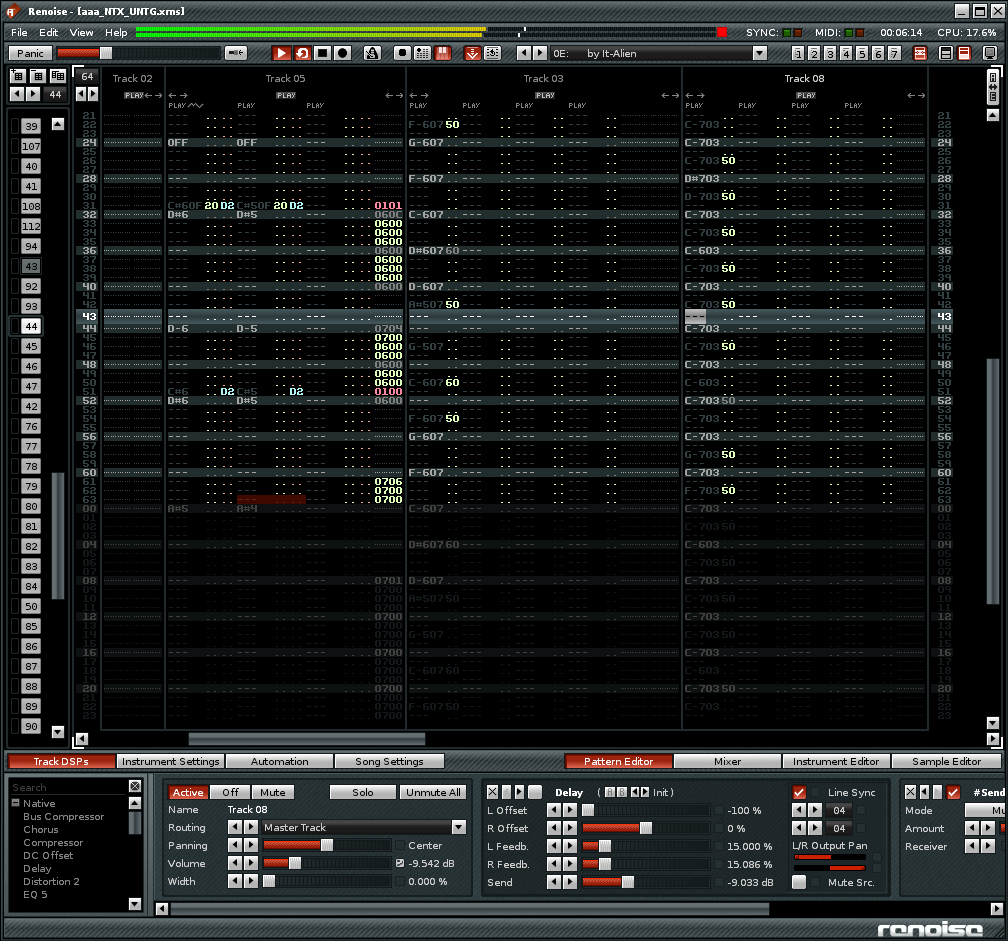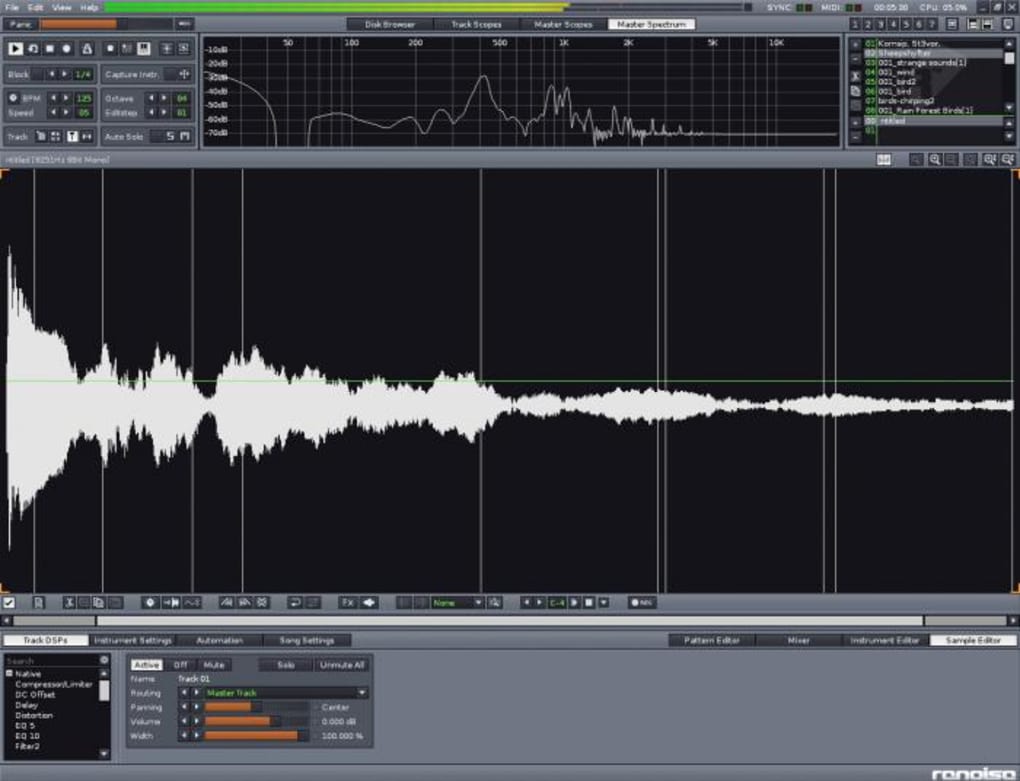


- #Renoise aiso out software
- #Renoise aiso out professional
Here is where the tricky part begins: Ideally on your first compressor you look for a longer attack, longer release, gentle knee, gentle ratio, and bringing the threshold down, and then turning the makeup gain up.
Put in this order, on your master track: Renoise Compressor, Renoise EQ 10 or 5, Renoise Compressor, and Freeware RDR Dither. Make enough patterns for your song to play through + 1 extra pattern, where you can shorten the lines per pattern, so that when you render your master, you do not have extra long audio tail. ( usually by entering 1 note, on instrument 00, or C-400 ) Trigger your wave in the pattern editor. Drop your audio wav into a Renoise instrument slot. Let’s pretend you have decided to leave permanently unchecked, “the Renoise dither function in your preferences.” Let’s pretend you are using only native Renoise DSP’s and the dither freeware. All you need now, are the essentials in bold, a few sentences up. When you are about to master let us pretend that your mix is, “flawless,” its wav has been rendered 32bit and 88.2 khz. ( I really hope I am not confusing the situation, I know you asked for a non-technical explanation, I am trying my best to summarize. And that is what we are using the dither for. I used to render at 24 bit, and 4.41khz, and I did one track 32bit and 96 khz, but after reading the forum a bit more I’ve settled at rendering my mixes 32bit 88.2 khz, and because this by half is 16 bit and 4.41 khz. That is a little, tiny 82 kilobyte vst, and it works great in Renoise, and I think it might only be 32bit… But I have been using this dither on several tracks now, and it works great. – I am not exactly sure how the Renoise dither works, and at some point in time I got a little tired of, “turning this setting on and off,” so I found a new solution. The settings for dither in Renoise are located Edit + Preferences + Audio. These are, “like to have,” because you can substitute depending on how, “flawless,” your mix is.Įssentially what you need: Compressor + Eq + Look ahead limiter + Dither en. So for quick and easy home/project studio mastering, we like to have 1. For example, “An entire album worth of tracks, might be balanced together, and have their meta data written, and have crossfades made for the CD, or whatever.” In the home/project studio environment, the process is more like, “loudness maximizing, and final eq balance.” The ideas are the same at Profession ME Studios but the ears, tools, and goals are different. #Renoise aiso out professional
I believe really in two different types of mastering, “home/project studio,” and Professional Mastering Engineer ( For example, what you get if you sent your track to the Capitol Records Studio. All of my more serious work is definitely electronic rock.Hi, there are many variables… If you are not looking for anything, “too fancy and technical,” I am going to try and suggest a good way to approach it. If it helps, personally, when I have to come up with something quickly, I'll usually make something instrumental that sounds like jazz. Live MIDI recording is treated as a bare afterthought, and they actually didn't even bother to implement multi-track audio recording. The UI uses hexadecimal notation almost everywhere, and there's a complete programming language built in for automating all the plugins and VSTs. The entire workflow is built around step-time editing, and the use of samples. If I had to characterize renoise in terms of it's design focus, I'd say it was designed for "technically minded" loners who can't play an instrument and don't know music theory.
#Renoise aiso out software
I would definitely agree that renoise is niche software though. So I don't really think it's realistic to say that renoise is designed for making techno. That said, this is what I came up with for statistics

I feel like most artists will tell you that their music utterly defies categorization but then when you listen to it, it's like classic rock or something. This is probably a bit subjective and I grouped a few generas together (for example, I lumped trip hop in with electro). I checked on the renoise artists page and went through all the artists to count them up by genera.







 0 kommentar(er)
0 kommentar(er)
